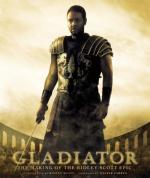|
This section contains 4,384 words (approx. 15 pages at 300 words per page) |

|
Though immensely popular, gladiators were by no means the only popular attractions of Roman amphitheaters. There were also a wide variety of animal shows, collectively known as venationes (singular, venatio ), or "hunts." (The term hunt is a bit of a misnomer, since none of these consisted of sportsmen stalking wild creatures in their natural habitats; fights would be a more accurate way of describing most of them.) Though technically classified as ludi, the hunts came to be associated with the munera, mainly because they were usually presented on the same program with gladiatorial bouts in the amphitheater or elsewhere.
Originally (throughout the second and well into the first century B. C.), the venationes were minor spectacles presented generally in the morning. Because this was when most Romans were busy working or attending to personal affairs, the...
|
This section contains 4,384 words (approx. 15 pages at 300 words per page) |

|




